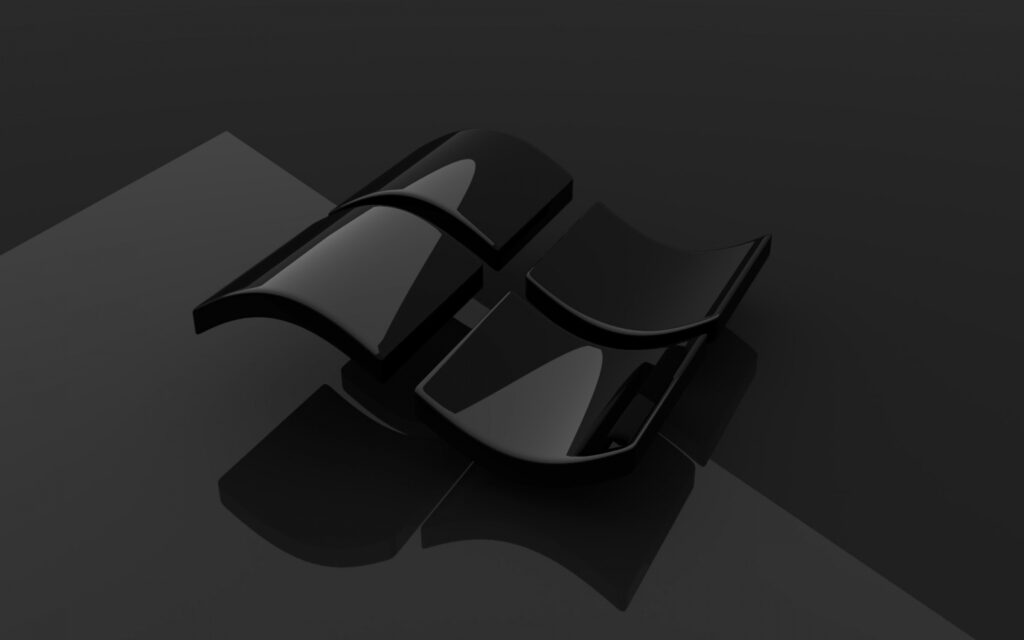If you updated your display settings through an app on another platform, you’re probably seeing a black desktop background. Here’s how to fix things right!
It’s inconvenient when your computer suddenly displays a black desktop background instead of the typical bright view. The steps to fix a black desktop background in Windows 10 are listed below.
You might also be perplexed as to why your computer’s desktop suddenly displays a slew of white icons and other items. It could be due to an annoying third-party program you loaded to change the appearance of the user interface.
But, since you’ll want to fix Black Desktop Background as soon as possible, don’t worry too much about it just make sure not to utilize any modifications once you’ve fixed (or disabled) them, at least until you figure out what caused our problem in the first place.
Fix Black Desktop Background In Windows 10
The Colorful Desktop Wallpaper is such a standard feature on Windows computers that it’s impossible to imagine a Windows PC without one. A Windows PC, on the other hand, may occasionally display a black desktop background.
This generally occurs while attempting to alter the desktop background image or set the desktop background to Slideshow Mode. Fortunately, a black desktop background in Windows 10 is a rare situation that can be remedied using one of the following solutions:
Turn on the option to show the Windows background
1. Make sure the “Show Windows Background” option is activated on your computer by following the instructions below.
2. Navigate to Settings > Ease of Access > Other Options on the left-hand side.
Make sure the Show Windows Background option is turned on in the right-hand pane.
3. Restart your computer and check to see if your computer’s default desktop background has returned.
Modify Your Desktop Background
Switching to a different background type might sometimes fix the problem of a black desktop background in Windows 10.
1. In the Modify left-hand pane, go to Settings > Personalization > Background.
Change the background type from color/picture to slideshow in the right-hand window.
2. Once the slideshow background has been displayed, you can return to your original color or picture background.
Use a picture to replace the black desktop background
Replace the black desktop background with any picture accessible on your computer to get rid of the black desktop background in Windows 10.
1. Select “File Explorer” from the context menu of the Windows 10 Start button.
2. Go to Pictures or any other folder or location where you want to save an image as your desktop background.
3. In the contextual menu, right-click on the image and select “Set as Desktop Background.”
4. Uncheck the box next to High Contrast Black.
1. In the left pane, go to Settings > Personalization > Colors.
Scroll down to the High Contrast Settings link in the right-hand window.
2. Change “High Contrast Black” to “None” on the next screen.
5. Examine the settings for ease of access.
Black desktop background in Windows 10 could potentially be caused by an error in the Ease of Access settings.
1. Go to your computer’s Control Panel.
2. On the Control Panel page, select Category View and then click Ease of Access.
3. Select Ease of Access Center > Make the computer easier to view from the drop-down menu.
4. Scroll down to the bottom of the next screen and uncheck the option to remove background pictures.
5. To save this option, click Apply and OK.
After that, click on Settings > Personalization > Background and pick a wallpaper of your choice as your computer’s background image.
Examine the power plan options
The problem of a black desktop background in Windows 10 could possibly be caused by the Control Panel’s Power Settings.
1. Go to your computer’s Control Panel.
2. On the Control Panel screen, make sure you’re in “Category” mode, then select System and Security from the drop-down menu.
3. From the System and Security Screen, select Power Options.
4. On your computer, click the Change Plan Settings link next to the current power plan (see image below).
5. Select “Change Advanced Power Settings” from the drop-down menu.
6. On the following screen, expand the option for Desktop background settings and make sure Slide Show is set to Available (see image below).
7. If the Slide Show option was previously off, enable it and then select a wallpaper by navigating to Settings > Personalization > Background.
The TranscodedWallpaper File Is Corrupt
If none of the previous techniques work, the transcoded wallpaper file on your PC is most likely corrupted.
1. Select “File Explorer” from the context menu of the Windows 10 Start button.
2. Rename the TranscodedWallpaper file in the C: Users/User Account/AppData/Roaming/Microsoft/Windows/Themes Folder to TranscodedWallpaper.old.
Note: If you can’t see the AppData folder, enable the Show Hidden Files option.
3. Open the Settings.ini file with Notepad while still in the Themes Folder, delete any contents (if any), and save the file.
After completing the above procedures, navigate to Settings > Personalization > Background to create a new desktop background on your computer.
